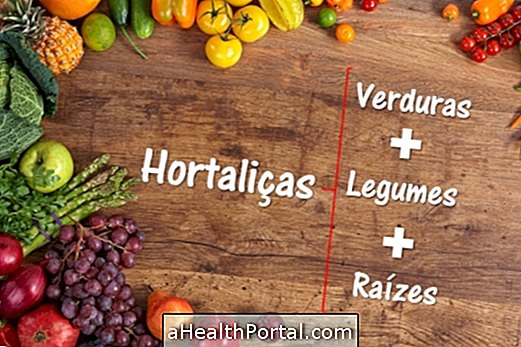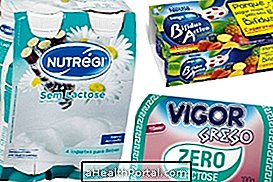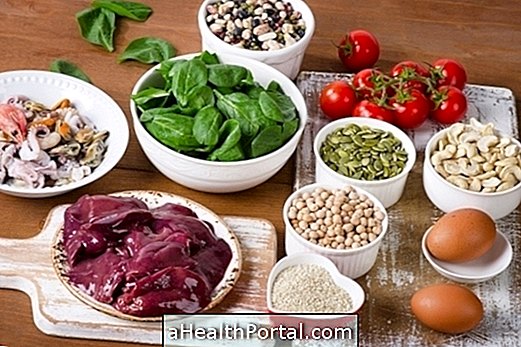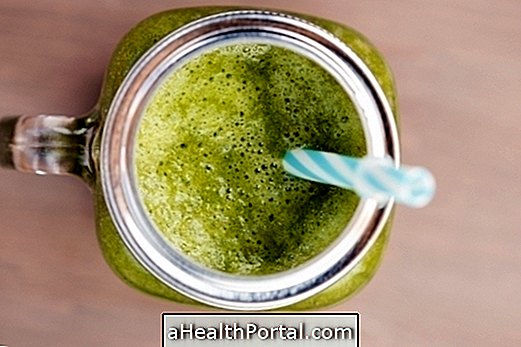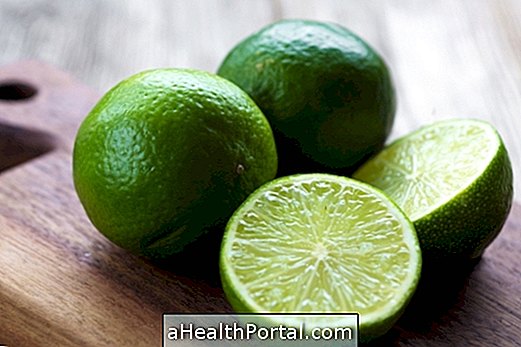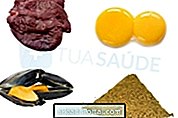Cross contamination is when a food contaminated with microorganisms, the most common of which is meat and fish, ends up contaminating another food that is consumed raw, and can cause diseases such as gastroenteritis, for example.
Such cross-contamination of food can happen by using incorrectly cut boards, dirty knives, or even by hands or dishcloth, for example. Some examples of how this can happen are:
- The raw meat discovered, dento of the refrigerator, and the salad ready for the consumption next door. Even if they do not touch the very air circulation inside the refrigerator can transfer the micro-organisms from the meat to the salad;
- Put the salad ready to consume in the container where the raw egg was;
- Do not wash your hands after cutting the meat and pick up the coffee maker for coffee.
To avoid this type of contamination it is essential to use cutting boards and different knives when cooking. The ideal is to have a plastic cutting board just to cut the meat, the fish and the birds. This board should be cleaned immediately after use with water, detergent and stop it always clean, can leave soaking in bleach or with a little chlorine.
In addition, to cut vegetables, vegetables and fruits should have another cutting board and separate knives only for this type of use. The washing of these utensils should also be done soon after their use, following the same principles of the meats.

How to avoid meat contamination
To avoid contamination of meat, fish or poultry, always store them in the freezer or freezer, properly labeled. It is possible to freeze with packaging coming from the market or butchery, but it is also possible to use old ice cream pots or other containers that facilitate the organization and identification of each type of meat.
However, you should not freeze meat, poultry or fish that have a bad smell, color or appearance of spoiled because freezing and cooking will not be enough to eliminate the germs that can cause food poisoning.
Here's how to keep the refrigerator always clean and organized to avoid contaminating food, making them last longer.
The following table indicates which are the microorganisms, where they may be and what diseases can cause:
| Examples | Foods that may be contaminated | Diseases that can cause | |
| Bacteria |
- Salmonella - Campylobacter jejuni | - Eggs, poultry, raw milk, yogurt, cheese and butter - Raw milk, cheese, ice cream, salad | - Salmonellosis - Campylobacteriosis |
| Virus | - Rotavirus - Hepatitis A virus | - Salad, fruit, pates - Fish, seafood, vegetables, water, fruit, milk |
- Diarrhea - Hepatitis A |
| Parasites | - Toxoplasma Giardia | - Pork, lamb - Water, raw salad | - Toxoplasmosis - Giardiasis |
How to defrost meats safely

To defrost the meat, poultry and fish you should leave your container thawing inside the refrigerator, on the middle shelf or on top of the bottom drawer. Wrapping a dishcloth around the packaging or placing a dish underneath can be useful to prevent the water from being subjected to a refrigerator, which can also end up causing contamination of other foods.
This can happen because even if the meat is not damaged, it is possible that it contains microorganisms that are harmful to health but are eliminated when the meat is cooked or roasted. but as certain vegetables, fruits and vegetables are consumed raw, as is the case of tomatoes and lettuce, these micro-organisms can cause food poisoning, even if they appear to be clean.
When thawing a number of steaks, for example, larger than the one you will actually use, the leftover meat can be frozen again as long as it has not been left at room temperature for more than 30 minutes but has been thawed inside the refrigerator.
Yogurt can be left on top of the kitchen countertop until it is ready for consumption, but it should only be frozen in its original and still closed package.
General care to avoid contamination

Some important precautions you must take to avoid contamination of food at home are:
- Wash the fruits and vegetables with a solution prepared with 1 glass of water mixed with 1 glass of vinegar. Here's how it goes here.
- Keep leftovers in the refrigerator, not letting the day pass on the kitchen counter or on the stove. The best way is to store the leftovers in a pot with its own lid, not leaving the food exposed;
- Thaw the food inside the refrigerator, on the bottom shelf or in the microwave;
- Always wash your hands before preparing or handling food;
- Change the dishcloth daily to avoid contamination;
- Hold the hair whenever cooking or handling food;
- Do not wear accessories such as a watch, bracelet or rings when in the kitchen;
- Cook the food thoroughly, especially the meats and fish, making sure they do not get pink in the middle;
- Do not store metal cans in the refrigerator, you should transfer the food to glass or plastic containers;
In addition to having this care it is also important to discard the parts of food that are damaged or moldy, to prevent this food contaminates others. Learn to recognize if the cheese is damaged or can still be eaten.
How to pack food to last longer
The best way to keep food in the refrigerator for longer, without risking being contaminated by others, is to always keep everything clean and organized inside the refrigerator.
There are bowls, cartons and cartons that can be used inside the refrigerator that can help keep food longer and prevent contamination. But in addition, each package should always be tightly closed and nothing should be exposed.
Always having in the kitchen the plastic film is a good way to pack the food and cover the ceramic that has no lid, for example. It adheres well, does not come in contact with food and helps in its conservation.
Leftovers from canned foods should be stored in a sealed container and consumed within 3 days.
